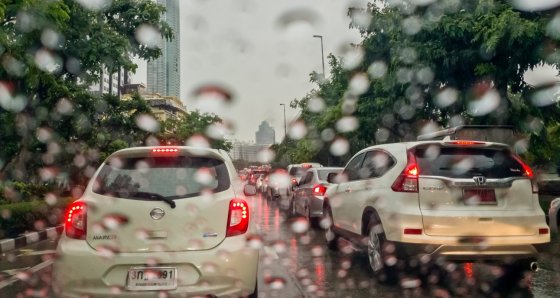
It is that time of the year when road traffic deaths are measured and compared to previous years over the December festive season. However, the annual road traffic crash statistics set an alarming background that cannot be ignored – that latest figures at hand from a 2015 CSIR report indicate that over 1,7 million South Africans are involved in more than 832 thousand road traffic crashes (RTC) annually. Broken down into daily figures, this averages around 2200 road traffic crashes RTCS every day.
The RTC figures are also affected by seasonal factors such as the weather and route traffic – a long distance driver on the N3 can experience four seasons on one day such as the recent November cold front that cast snow, rain and mist over South Africa in summer. eThekwini Municipality reports that RTCS more than double in wet weather, placing an enormous strain on emergency services.
So, crisp, dry, clear winter weather is behind us and drivers of trucks, bakkies and passenger vehicles must be alerted to a demand for seasonal change in driving behaviour. Losing a few precious seconds reaction-time on a wet, misty, spray-driven road can turn into a nasty incident. Only one vital second counts at 120kph – two lost seconds equals 66m distance!
|
VEHICLE SPEED PRIOR TO BRAKING IN Kph |
|||
| 60 | 80 | 100 | 120 |
|
DISTANCE TRAVELLED IN PRE-BRAKING TIME (DELAY) OF 1 SECOND IN METRES |
|||
| 17 | 22 | 28 | 33 |
There are a few basic disciplines that can be easily applied:
- Slow down when it’s wet, and especially at night because a dipped headlight beam only reaches 55m, and at 120kph a driver easily over-drives the range of headlamp visibility.
- Ensure that windscreen washer mechanisms are effective and that washer reservoirs are filled for every trip – a dirty windscreen contributes to poor reaction times.
- Rear-end crashes are common at night and many truck stop lamps and turn-indicators are notoriously inadequate due to the presence of months of accumulated road grime. Drivers must take the responsibility and assume the task of checking, and if necessary, cleaning lamps on a regular basis. It’s the easiest regulation to enforce and for drivers to maintain. Regulation 169 (1) (f) – ‘Stop lamps must be maintained in a clean condition and in good working order’. How many seconds reaction time do we lose here?
- De-misting a cab to see out of it can become a very annoying, dangerous hazard if the de-mister is not working. Air-conditioning is the most effective de-mister as it removes moisture from the passenger compartment – if fitted, drivers must be trained to use this in wet weather.
- There are very ordinary items of truck equipment that compound delays in hazard recognition when not fitted or maintained in terms of the Regulations. Just follow a heavy truck with missing or defective wheel flaps on a wet road where road spray makes overtaking extremely hazardous.
Drought is still gripping South Africa and we all hope for a wet summer season. The question is, are you, your drivers and vehicles prepared to gain as much reaction time as possible in varying weather conditions?
